What does my smartphone really do?
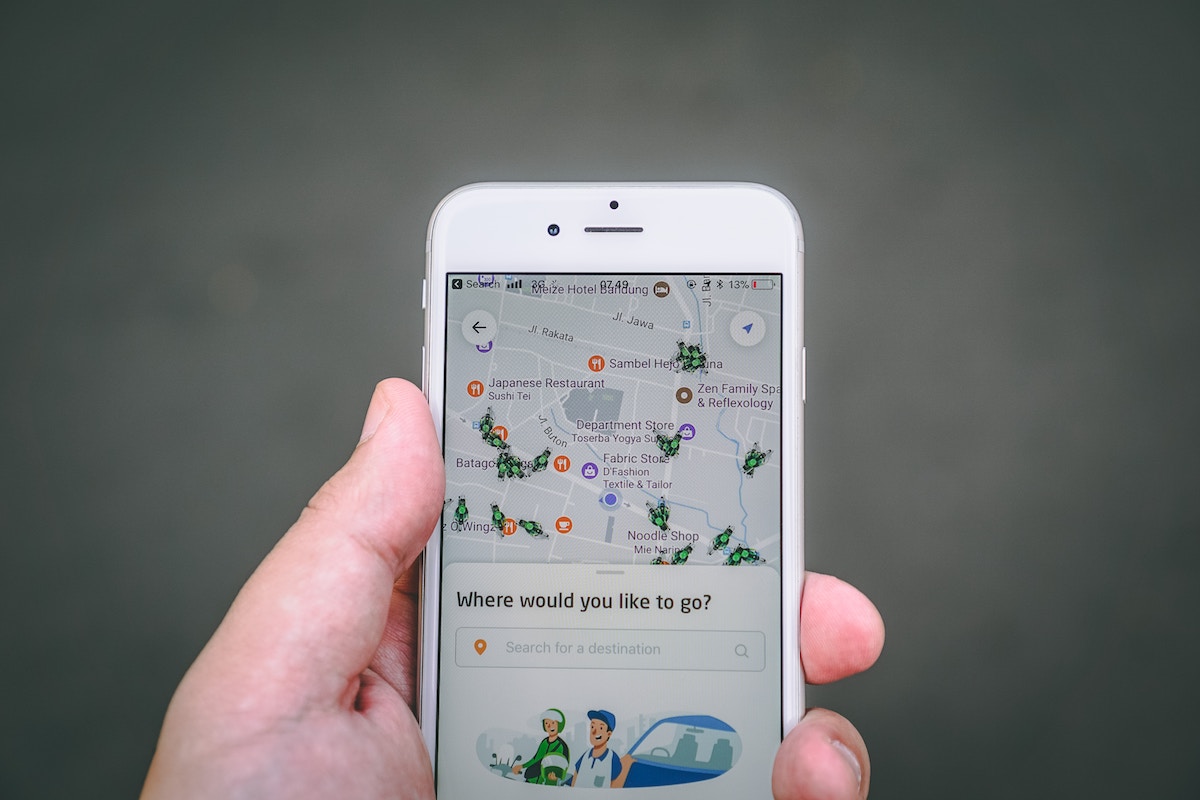
What is your phone really doing?
More specifically, what are the apps installed on your phone really doing?
Do they just sit there? Do they constantly send data to their servers?
Do you even know what is sending data where and how often?
I had to answer this question recently for a little pet project.
I had no intention of rooting my phone, nor did I have unlimited time to tinker with its internals (I still need it during the day).
So? How do I do it?
Enter Wireshark.
Jaws

Photo by David Clode on Unsplash
Wireshark is a communication packet analysis tool. It has been around for 20
years now and supports monitoring of almost any computer protocol known to man.
From Ethernet to Bluetooth to Token Ring and beyond.
It can filter packets, correlate, introspect, import, export, book cinema tickets, you name it!
How to install it?
Very easily, with installers for Mac and Windows.
You have installed Wireshark on your computer and you are thinking…
And now what?

Photo by Franck V. on Unsplash
There are 2 ways to capture your mobile phone’s traffic.2 that the amateur guy writing this could quickly think of :-)
-
Capture wifi traffic
Your phone and your laptop are part of the same wifi network. -
Mobile phone uses your PC as access point
Your phone connects to your laptop/machine to access the internet. (if your phone and OS support this)
Let’s see them in more detail.
Capture wifi traffic
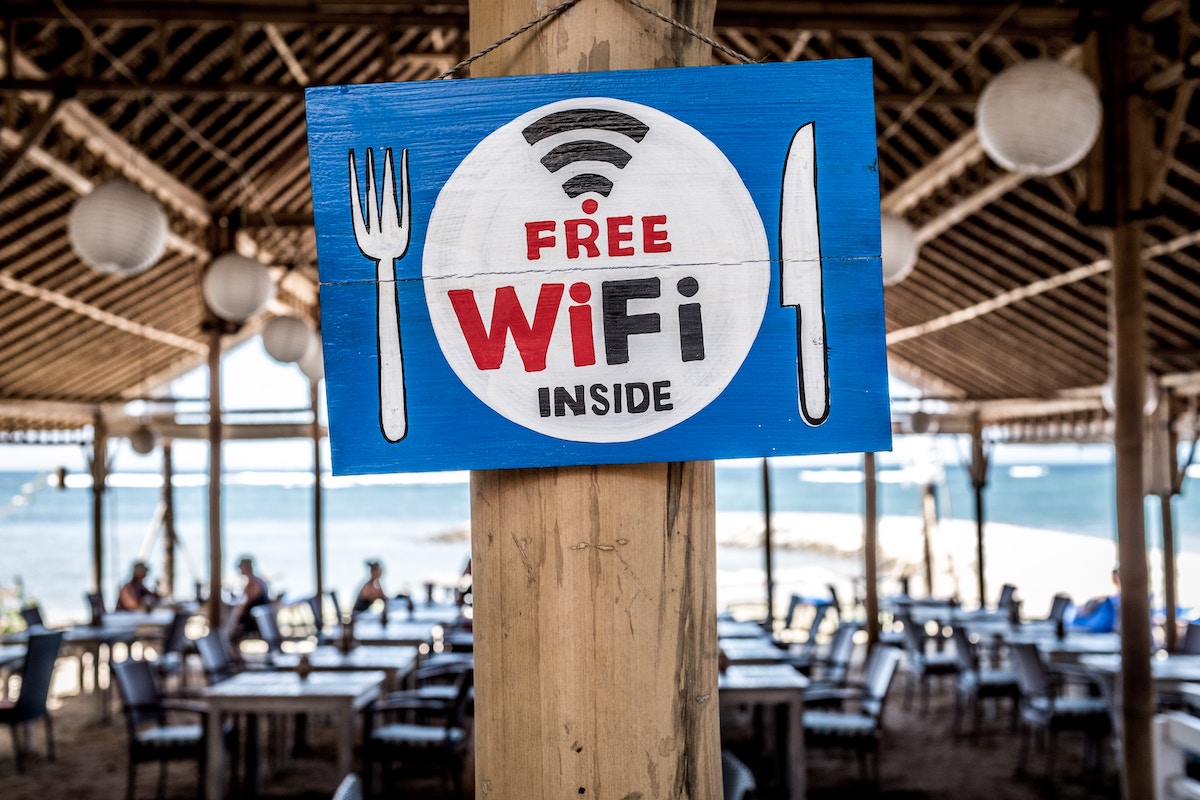
Photo by Bernard Hermant on Unsplash
To put it in very simplistic words, wireless network is just radio; anyone can listen in. However, if it is a password-protected network, then you need the wifi password to actually understand who is doing what.
IEEE 802.11 (a.k.a. WLAN, a.k.a. wifi) is the protocol for wireless
network communications. Packets and
traffic at this low level can be useful to trouble-shoot network problems.
E.g. some device is flooding your local airwaves, packets keep dropping off,…
You need to know what you are doing and looking at at this low level.
Depending on your laptop and wireless card, you may need to tweak things to actually get some meaningful traffic, i.e. let Wireshark interpret the low-level stuff for you.
Note: All screenshots and settings are from a MacBook Pro,
running MacOS Mojave and Wireshark 3.0.0.
Your settings and UI may differ slightly.
What is my laptop’s IP?
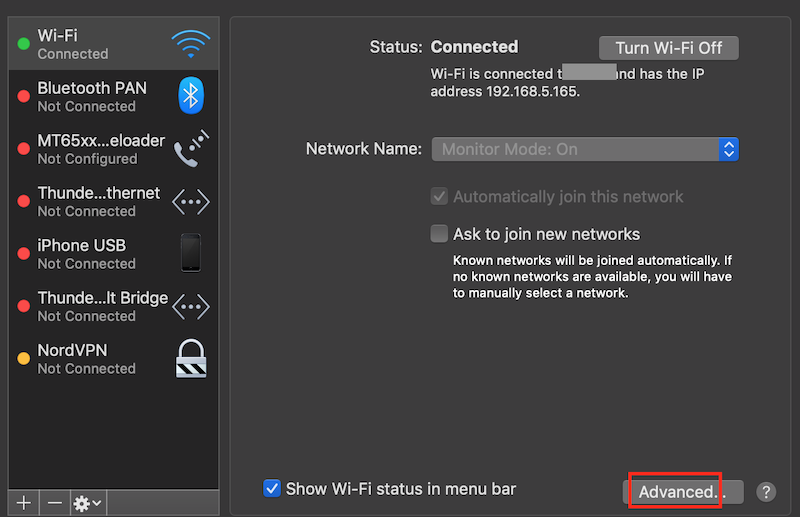
In the settings screen of your wireless adaptor, select your wifi.
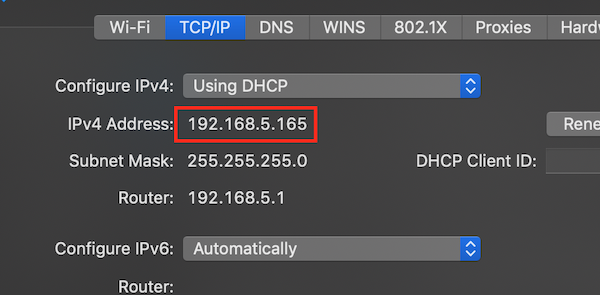
Then note down your own IP. You will need this later on.
What is my phone’s IP?
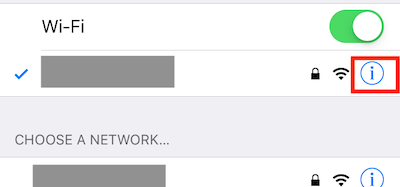
In the wireless networks of your phone’s settings screen , select your wifi.
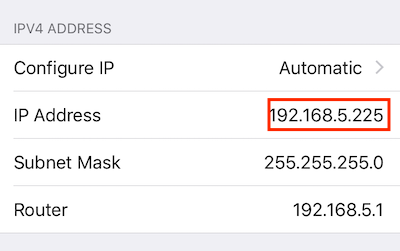
Then note down your phone’s IP. You will need this later on.
Launch Wireshark
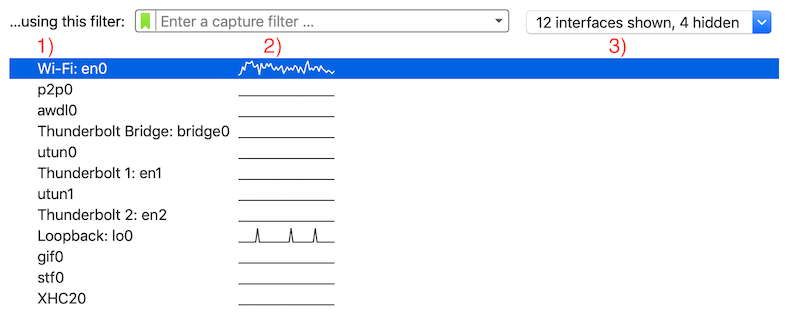
Launching Wireshark, you will see
- A list of all potential sources of traffic
- If they are currently active or not
- A drop-down allowing you to show/hide sources
Fine-tune capture
Before we start we will need to fine-tune things a bit.

Select your wireless source and click the settings button

In the Input tab
- Select
802.11 plus radiotap Promiscuousmode, i.e. capture all traffic flying around- …and be in
Monitormode

In the Options tab
Resolve MAC addresses: As Wireshark encounters network traffic identifying hardware it starts remembering and showing the names of devicesResolve network names: On a similar manner, it remembers and shows host names (www.foobar.com), rather than IPs (2.1.1.234)
Wifi settings
There is one last thing to capturing wifi traffic: being able to decrypt it.
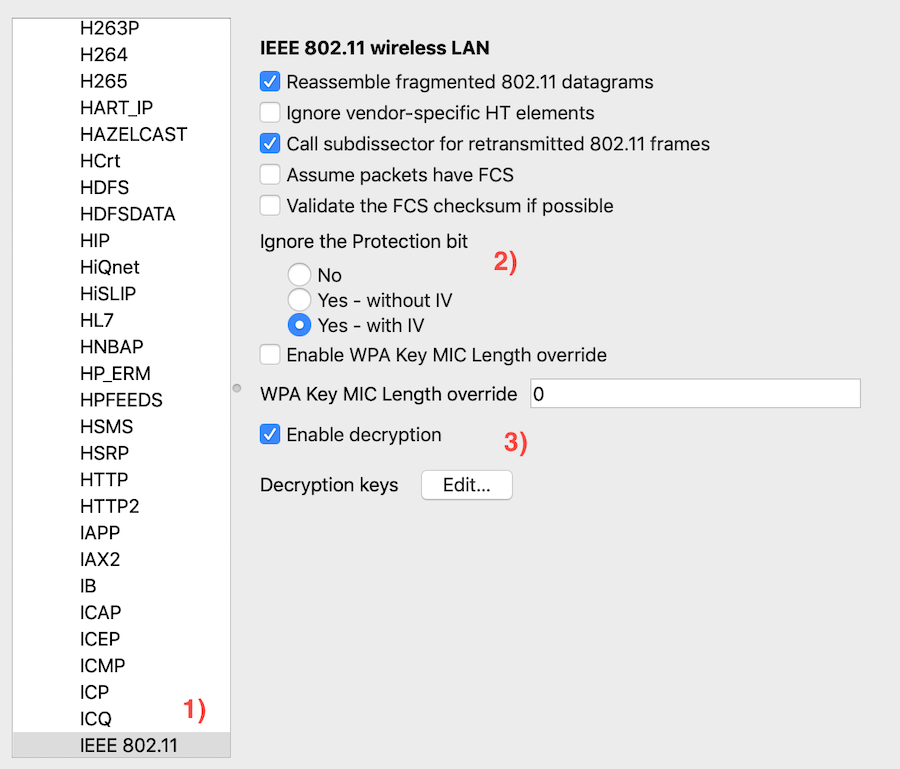
Go to the Preferences menu
- In the
Protocolslist, findIEEE 802.11 - Select
Yes - with IV(you may need a different setting for your machine!) - (Only if your wifi has a password)
Enable deryptionand clickEdit
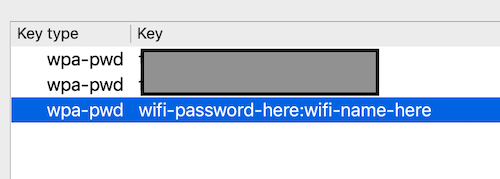
Select WEP (really old) or WPA (most likely), according to your wifi’s settings.
The format of typing the wifi password is password:wifiName, e.g. ‘superman3:Netgear-3e45’.
This way you can have settings for more than one wireless network.
Start capture
Double-click the Wireless adapter from the list to start capturing traffic.
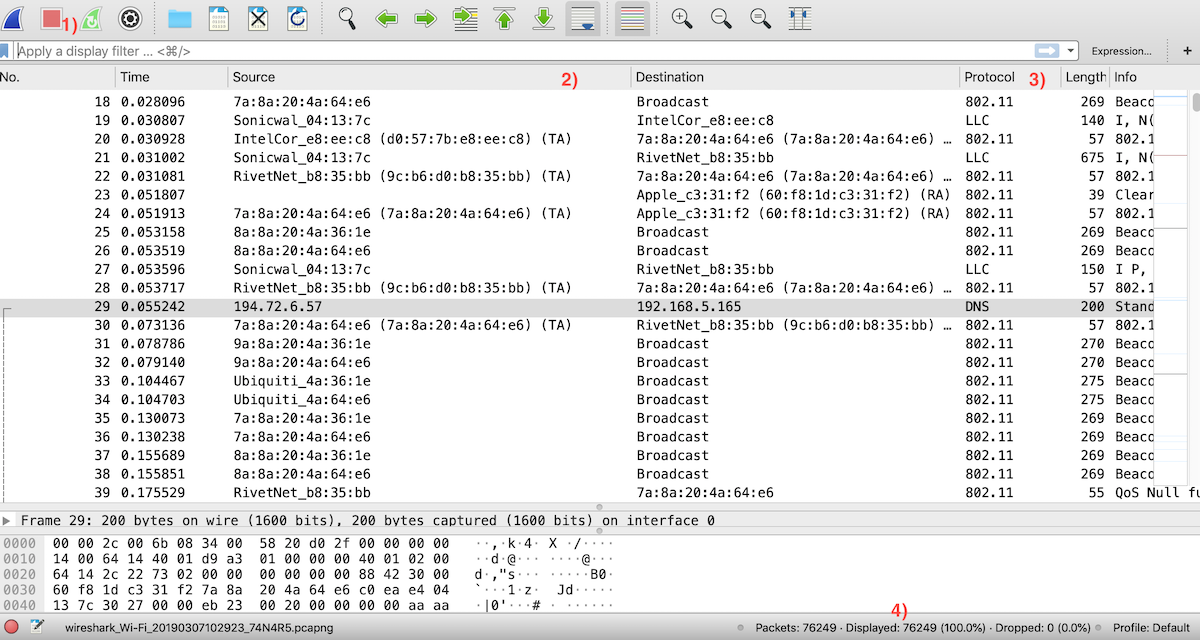
- The top-left buttons allow you to start/stop/restart capture
- Each packet has an identified source and destination
- …according to its recognized protocol. This will help you identify what you are looking for
- Finally, bottom-right you can see the packets captured.
Unless you are in a really-really quiet network (home alone, no other devices), you will need to filter information.
Ignore 802.11 management packets

You can focus only on IP packets by filtering for that protocol.
Wireshark has a query language and thousands of fields to filter on.
Ignore my laptop’s traffic
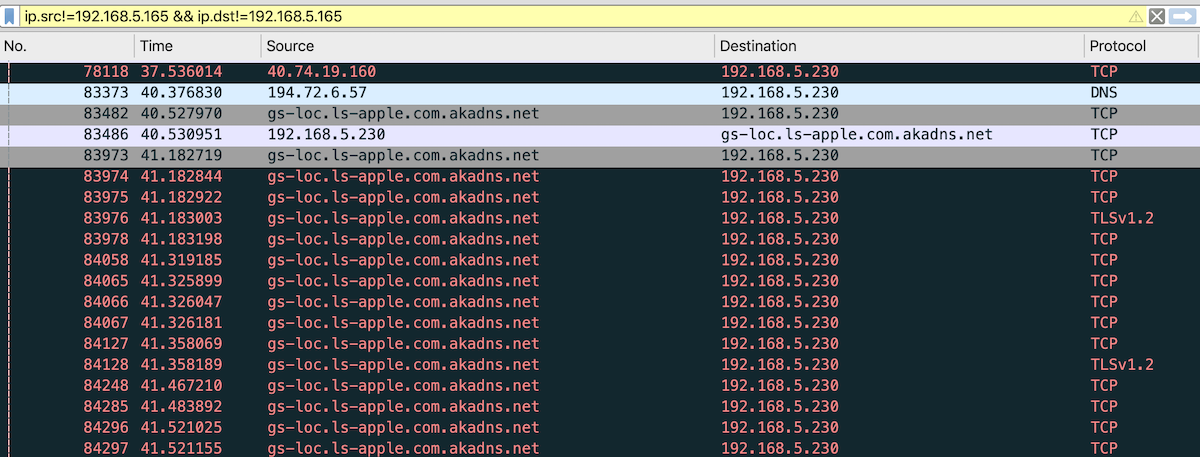
You can further filter by ignoring your own machine’s traffic (from and to).
Or you can just filter for the traffic from/to your mobile phone.
These are the IPs we noted down earlier.
You will now start seeing traffic coming in with locl and remote host names.
Are we ready to hack now?
Well, almost there!
The last thing to start properly seeing your phone’s (or any device’s) traffic is
to ‘witness’ a full EAPOL handshake.
In plain English, the device has to (re-)join the wifi while you are capturing
and you get all 4 packets of the handshake.
In the case of a phone that means switching on the wifi, when coming out of sleep mode. Even then there is chance that your device renegotiates and you have to switch off/on again.
PC as gateway

Photo by Parth Vyas on Unsplash
The above is too much work.
A couple of planets need to align, plus the network needs to be quiet, esp.
if you are grasping at straws.
An easier way is to use your laptop as a gateway, if your OS supports it.
In plain English, share your laptop’s internet connection with your phone
(rather than the other way around).
Share laptop connection
After enabling your laptop’s Bluetooth connection…
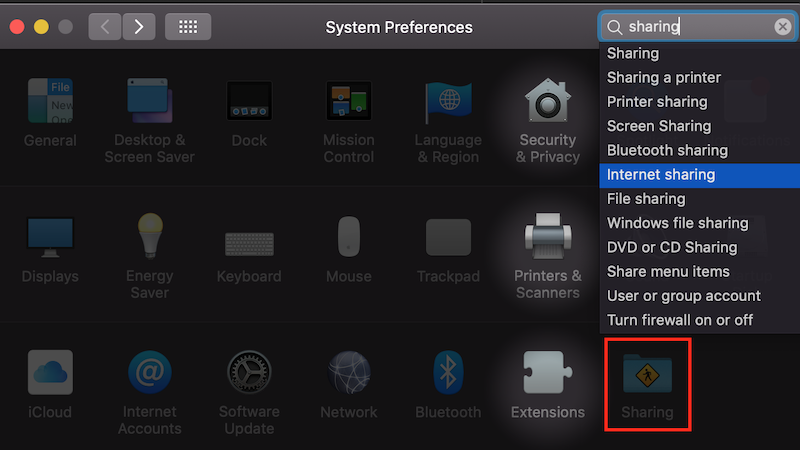
In your Settings dialog, find the Sharing section.
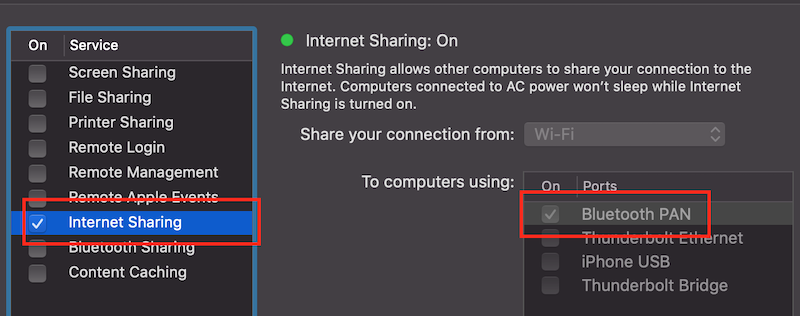
Select Internet sharing from Bluetooth (or another combination which
would work for you).
Connect from phone
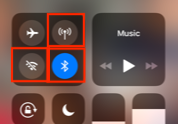
On your phone, switch off all connections, including mobile data.
Leave only Blueetooth on.
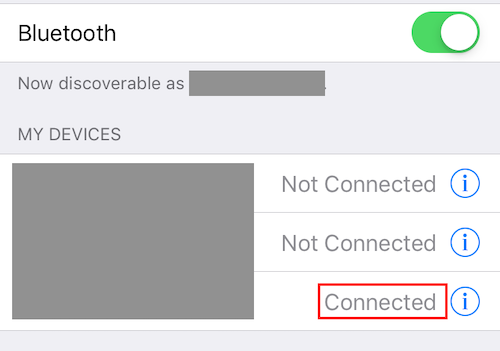
Connect to your laptop.
…and profit!
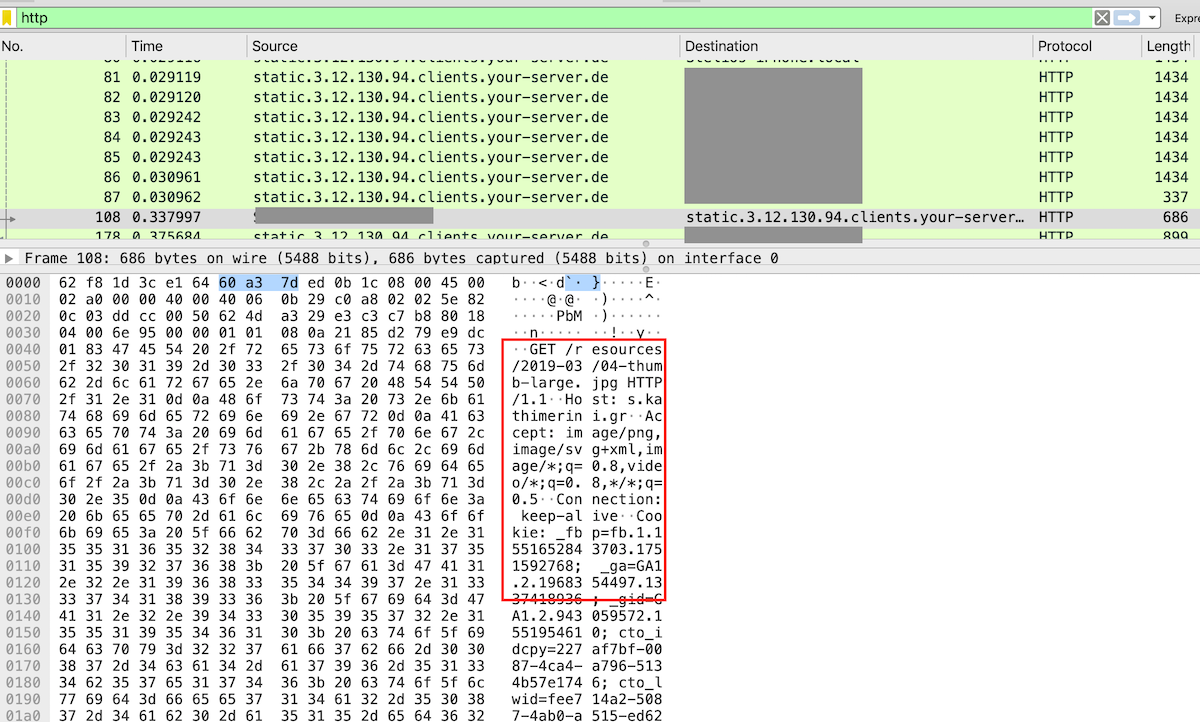
You can immediately see traffic from/to your phone.
You can now start filtering/dissecting for what you are looking for.
Parting thought

Photo by Maria Teneva on Unsplash
For many of us, our phones may be worth much-much more than their monetary
value.
Taking an occasional look on what goes in and out does not hurt.
Happy ‘sharking!
